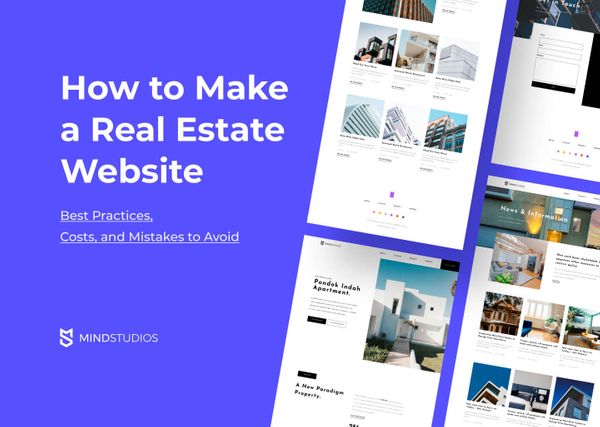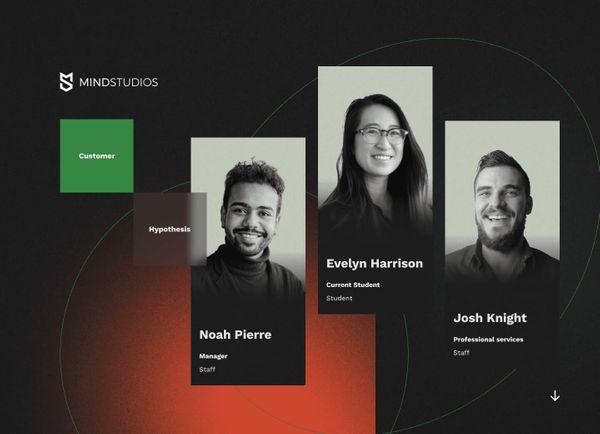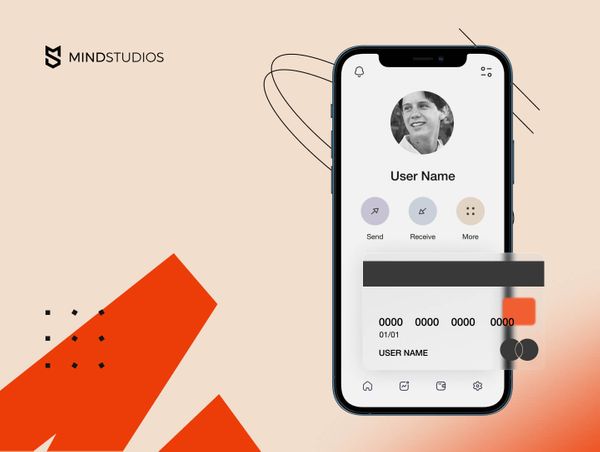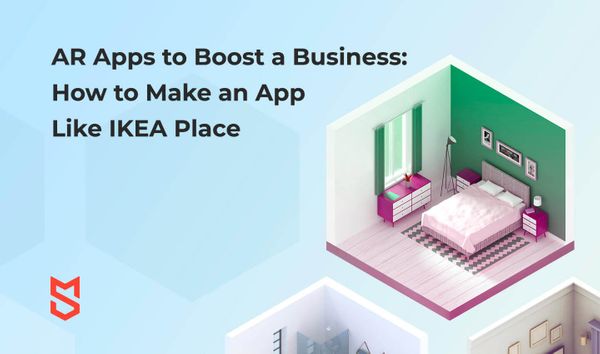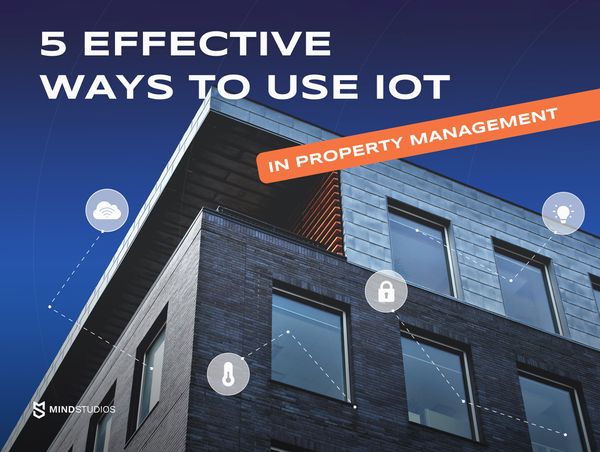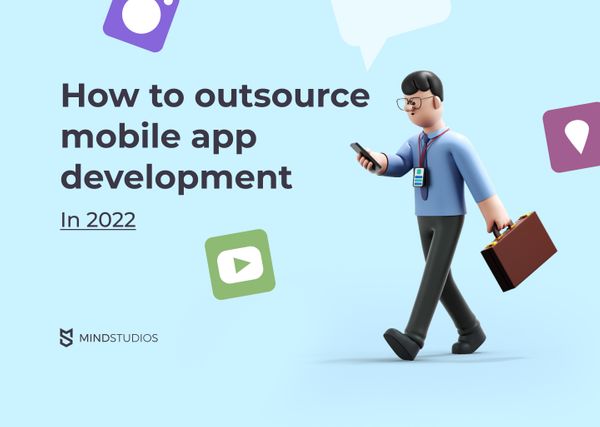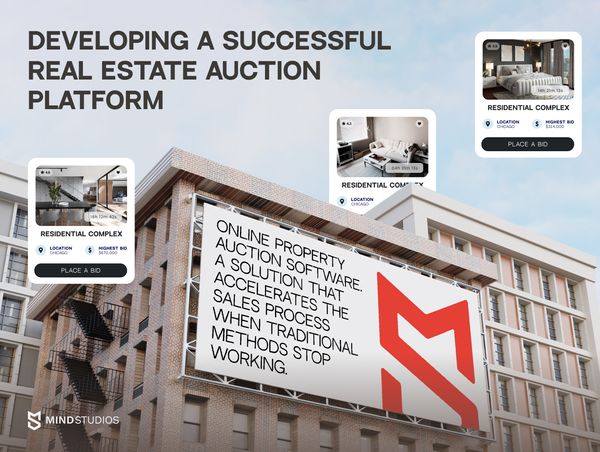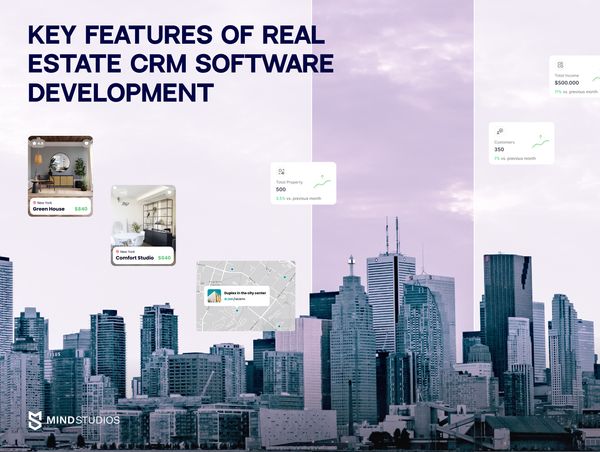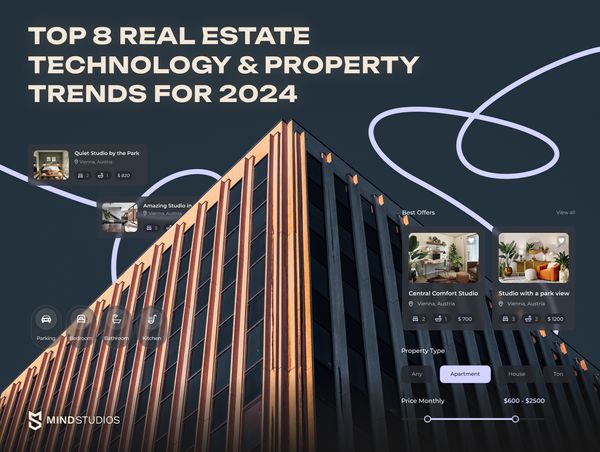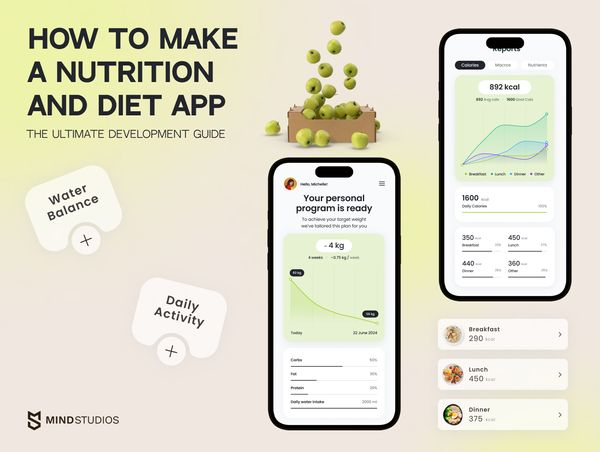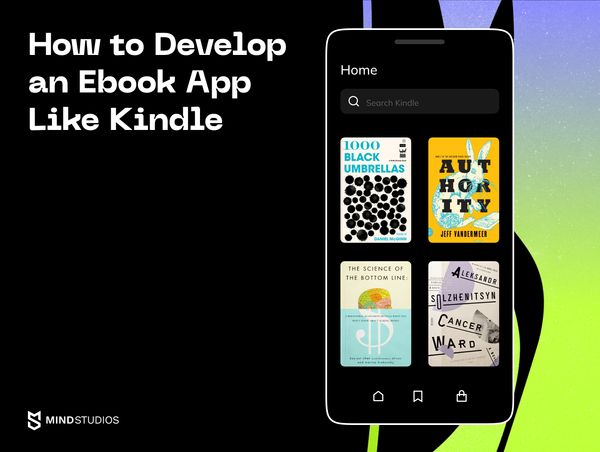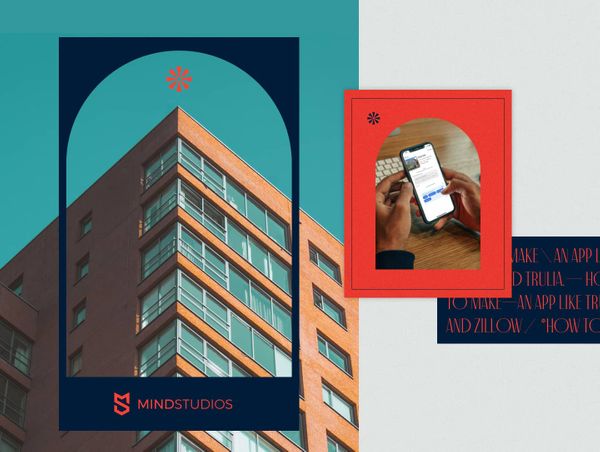
Over 10,000,000 downloads on app stores make Zillow and Trulia undisputed real estate mobile app leaders. So, the secret of making a successful real estate app is plain to see: Copy Zillow or Trulia and enjoy their advantages.
In fact, it's not all as easy as it sounds.
If you plan to capture the American market, you need to create a real estate app that isn’t just like Zillow or Trulia to bypass the fierce competition. If you plan to enter a market outside of the US, chances are, you'll have to revise Zillow's functionality because of different target users, competitors, laws, government policies, and more.
Learn from Zillow's and Trulia's strengths but.. Move forward.
Figure out how our time-honored approach to real estate mobile app development can help you build a competitive app your agents and clients want. Keep on reading or request a 45-minute free consultation to jump-start your real estate mobile app idea realization right now.
Real Estate Software and Apps Market Size
To make a real estate app deliver on your hopes, market research should be your first step. Even though you work in this industry for years and think you know everything. Don't let your preconceptions cause your project to die in its infancy.
Preliminary market research can provide you with up-to-date, sometimes unexpected, insights about:
- The ability of a real estate mobile app to meet your income expectations
- Market share you can count on
- The latest competitors’ updates and cost to entice competitors' clients
- Real estate tech trends and innovations
- Industry statistics and reports to forecast your ROI, and more
For example, interesting things emerged during our South-African market research before developing a rental platform Rentorr. In a nutshell, to meet landlords’ needs and stay competitive, it was critical to equip the platform with a tenant verification system backed by bank APIs.
Let’s explore the statistics from the 2023 Home Buyers and Sellers Generational Report made by the National Association of Realtors Research Group:
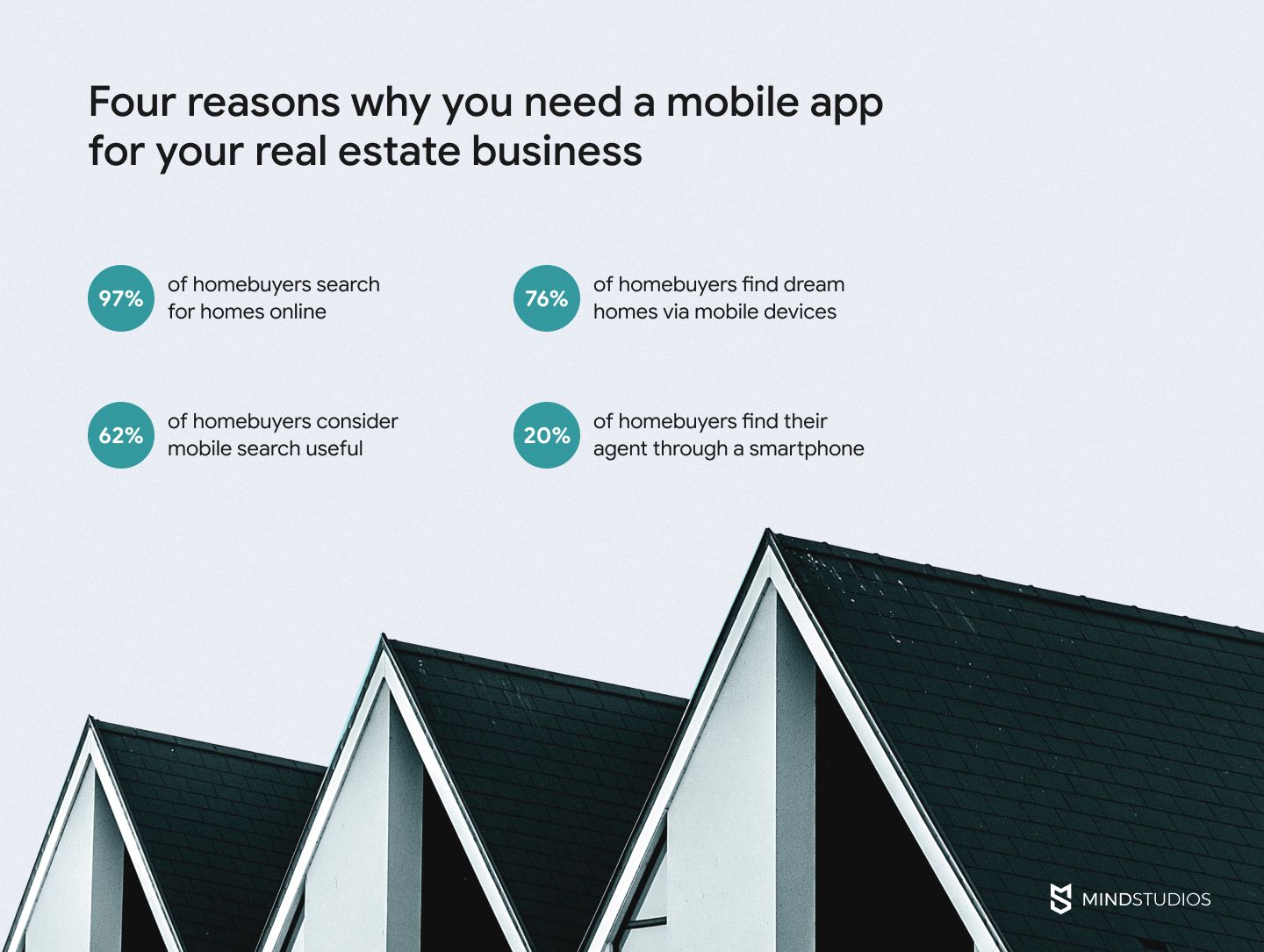
What can these figures mean for you?
Being a real estate company, you probably have a website, a YouTube channel, and/or a social media business page to allow your clients to easily find you. If you don’t, you need one.
However, with a mobile app, you can triple the chances for your listings to be found by home buyers, double increase users’ loyalty to your brand, and help your agents be closer to clients.
Thanks to a mobile app, you can also keep up with digital trends in the real estate industry and attract substantial investments.
For example, Fintor, a platform for investing into fractional property shares, launched its mobile-first platform on iOS and Android alongside rasing $6.2 million in funding in October 2022. Who said your real estate mobile app couldn't be the same worthy asset if done well?
Now let’s summarize what benefits you can achieve from building your own real estate app.
Benefits of a real estate mobile app
To create a marketable real estate mobile app, you need to account for your target users’ wants and needs. Usually, there are three types of users in the real estate business: buyers, sellers, and realtors. Each will get their own benefits from your custom real estate app.
Benefits for buyers
Let’s define what benefits your app can bring to homebuyers based on experience from top real estate mobile apps:
- Access to up-to-date information at any time
- Time savings by comparing properties without driving to them
- Property search using a variety of filters
- Easy way to contact an agent and get 24/7 support
- Guidance for buying and document signing
Benefits for sellers
Let’s see how your app can entice sellers by delivering on the following benefits:
- Great way to double-check pricing
- Increased market reach
- Can show properties at their best
- Speeds up property sales
- Guidance for selling and document signing
Benefits for realtors
Finally, let’s highlight the core benefits your agents will get if you build a real estate mobile app.
- Exhaustive property information while on the go
- Automation of routine tasks
- Increased market reach and ability to retain leads
- Extra revenue stream
- Greater brand awareness
As you see, providing a wide range of functionality, nonetheless, top real estate apps target specific user needs. If you aim at building a successful real estate app, you need to figure out the needs of your agents, sellers, and home buyers.
Only based on data from market research, competitor analysis, and user surveys, will you be able to make the right decisions on what features you need to include in your app to meet user needs and to differentiate your app from competitors.
Some Tips Before Creating a Real Estate App
Apart from condusting market research, competitor and target user analysis, you need to think of your unique selling point. What will set your real estate app apart from Zillow- and Trulia-like apps? What will make your users first use and then pay for your app?
Once you define your USP, think of the right monetization model. It should be chosen before the development. You can write all your considerations into a mobile app product requirements document and provide a well-defined project vision for the introduction meeting with your development team.
As for the latter, it’s better to choose a development team that has relevant experience in building real estate mobile apps. Since real estate is Mind Studios’ industry in focus, we can provide you with valuable insights during initial consultation.
Must-have features in a real estate app
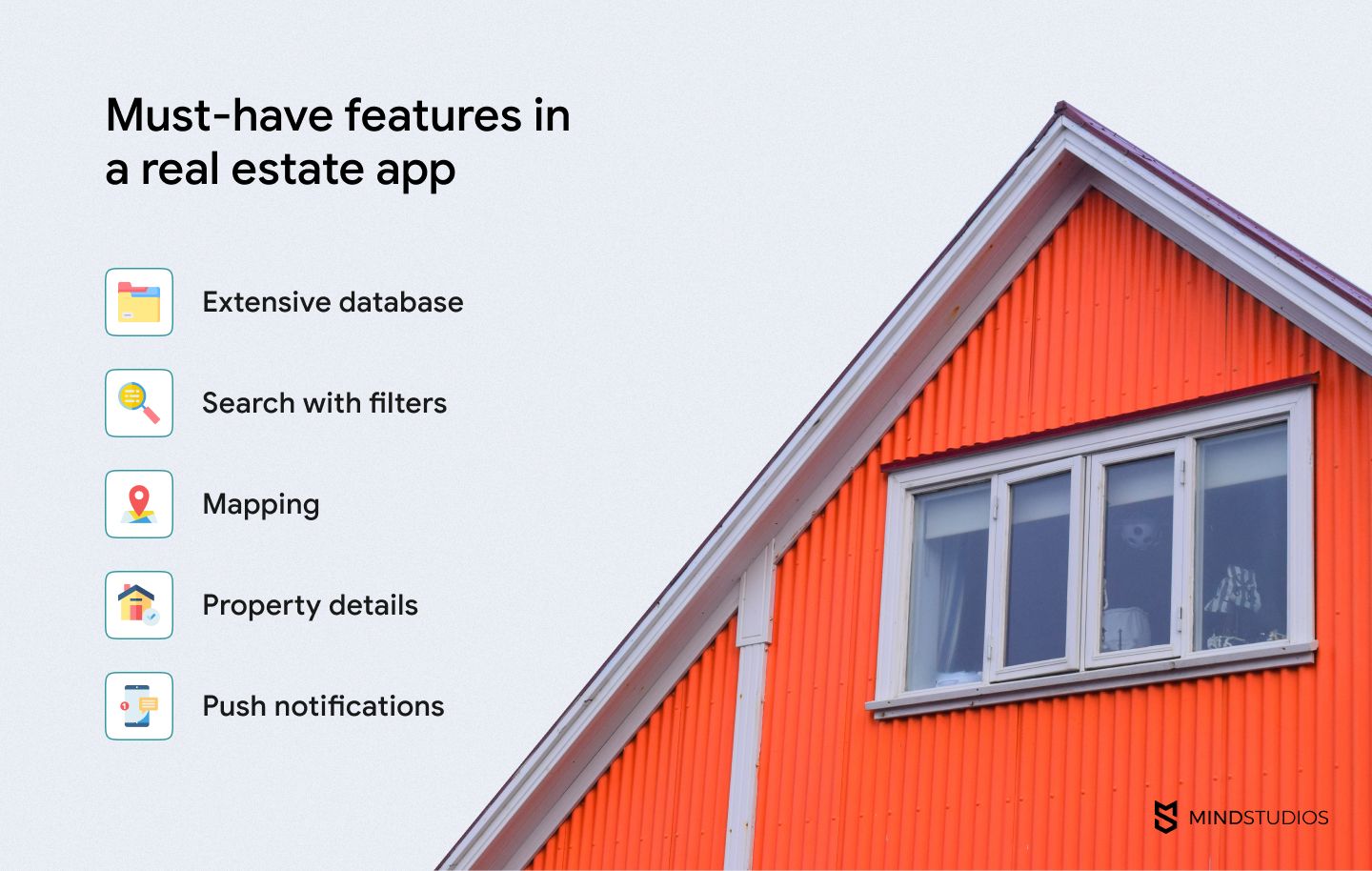
After you've completed a discovery stage, you might think: "Now I know everything about how my app should work, so why not skim the cream off from building the fully-featured real estate app?"
Think again.
Qualitative market research together with analyzing target audience and competitors enables you to create assumptions on what your real estate mobile app should look like. Now you need to make sure your assumptions are right. To validate your real estate app idea quickly and at a low cost, it makes sense to develop a minimum viable product (MVP).
Initially, you need to define what app features you should include in your real estate app MVP to make an app for real estate marketable and keep within your budget.
The simplest way is to peek at the 11 basic features that Zillow and Trulia provide users with and what you can add to your real estate app development backlog.
Feature #1. Registration
This feature allows users to sign up via social media accounts, email addresses, or Apple ID. Analyze what social media channels your target users prefer. According to the NAR, real estate agents, for instance, are most active on Facebook, LinkedIn, and Instagram.
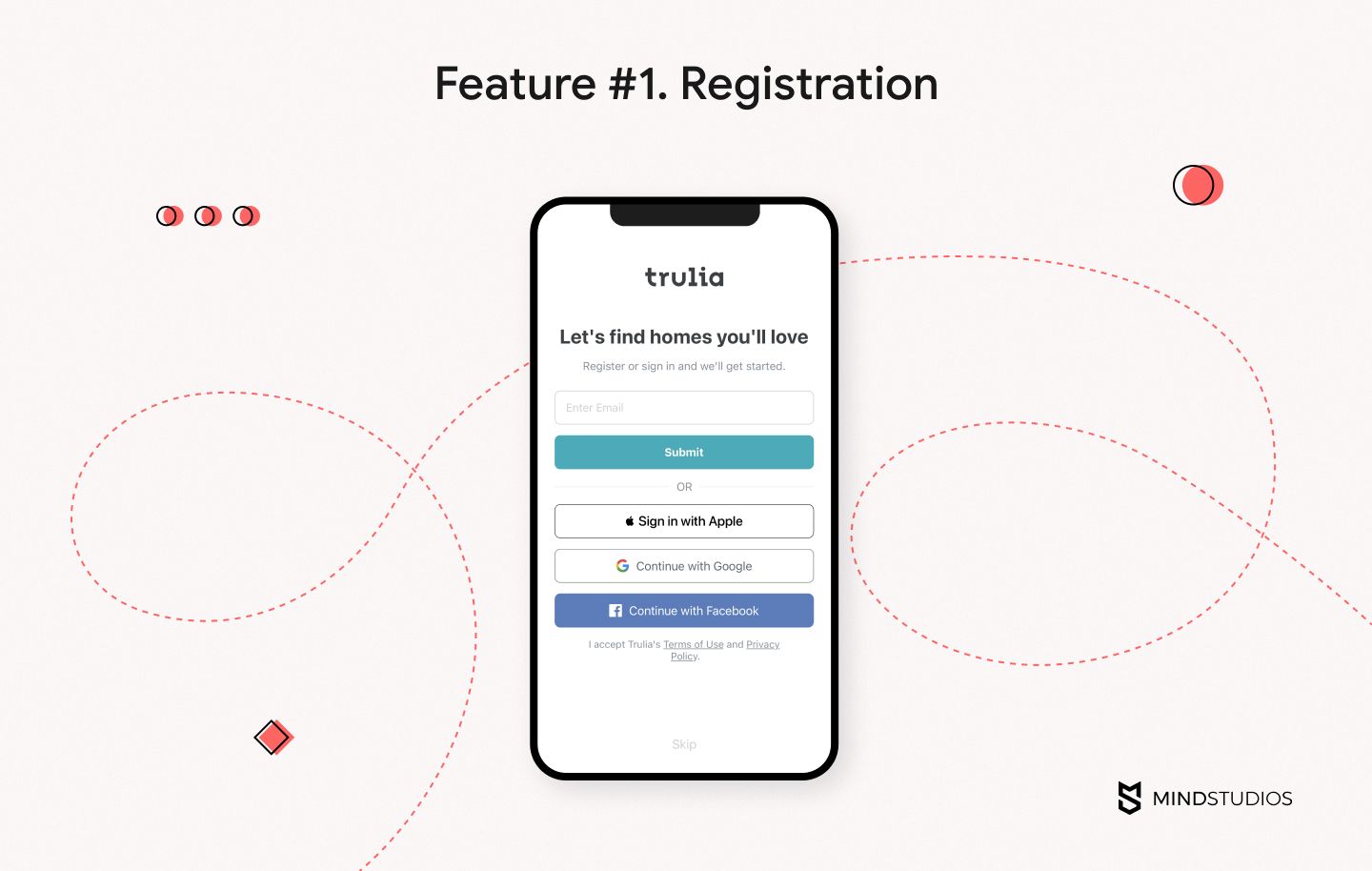
Feature #2. User profiles
Since you have three types of real estate app users, you need to create different profiles for each of them. Consider putting a buyer’s profile to the end of your app’s navigation bar. Most of first-coming homebuyers will likely want to search for homes rather than fill long forms. Meanwhile, it’s sensible to offer agents to create their profiles just on the first onboarding screens.
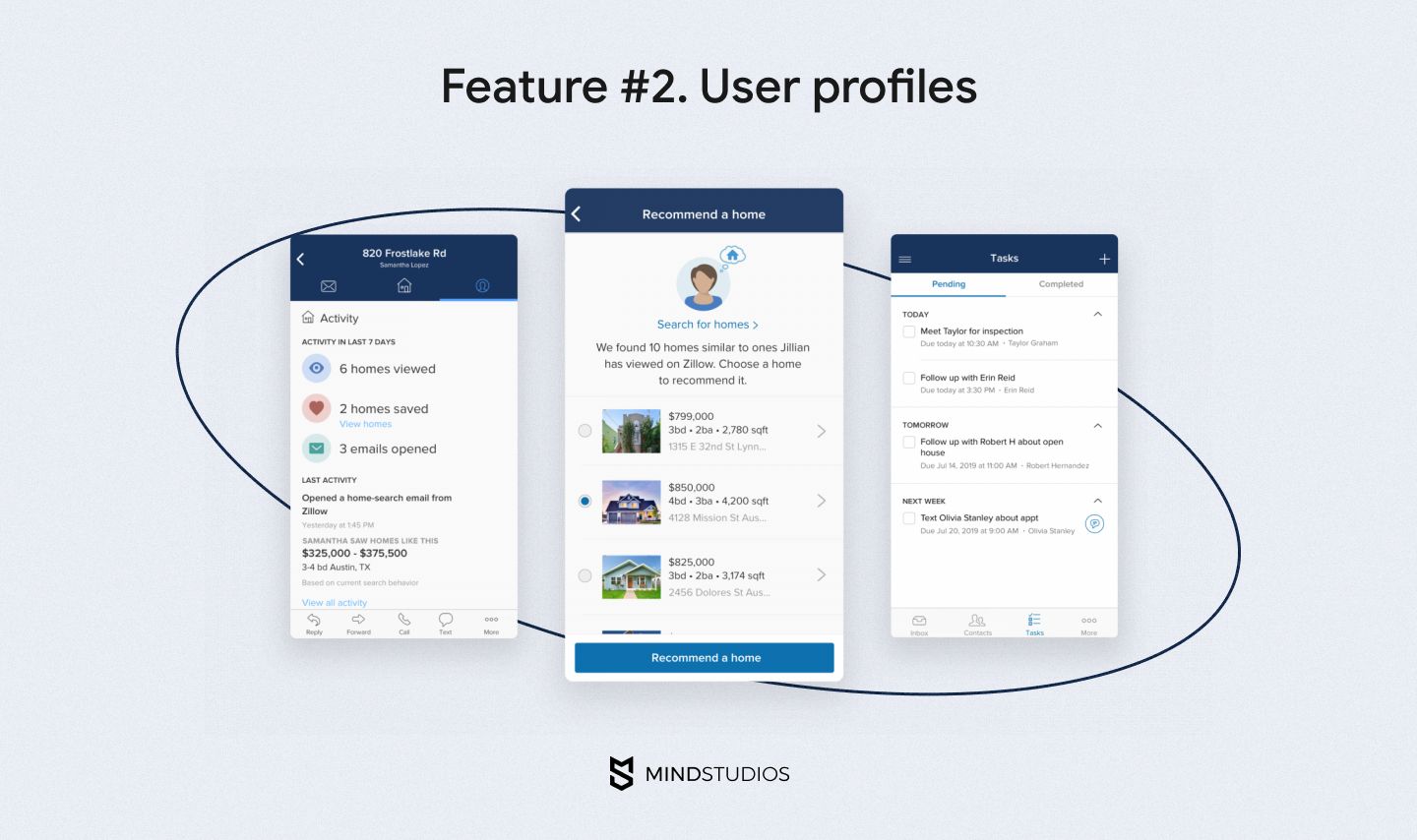
Feature #3. Extensive database
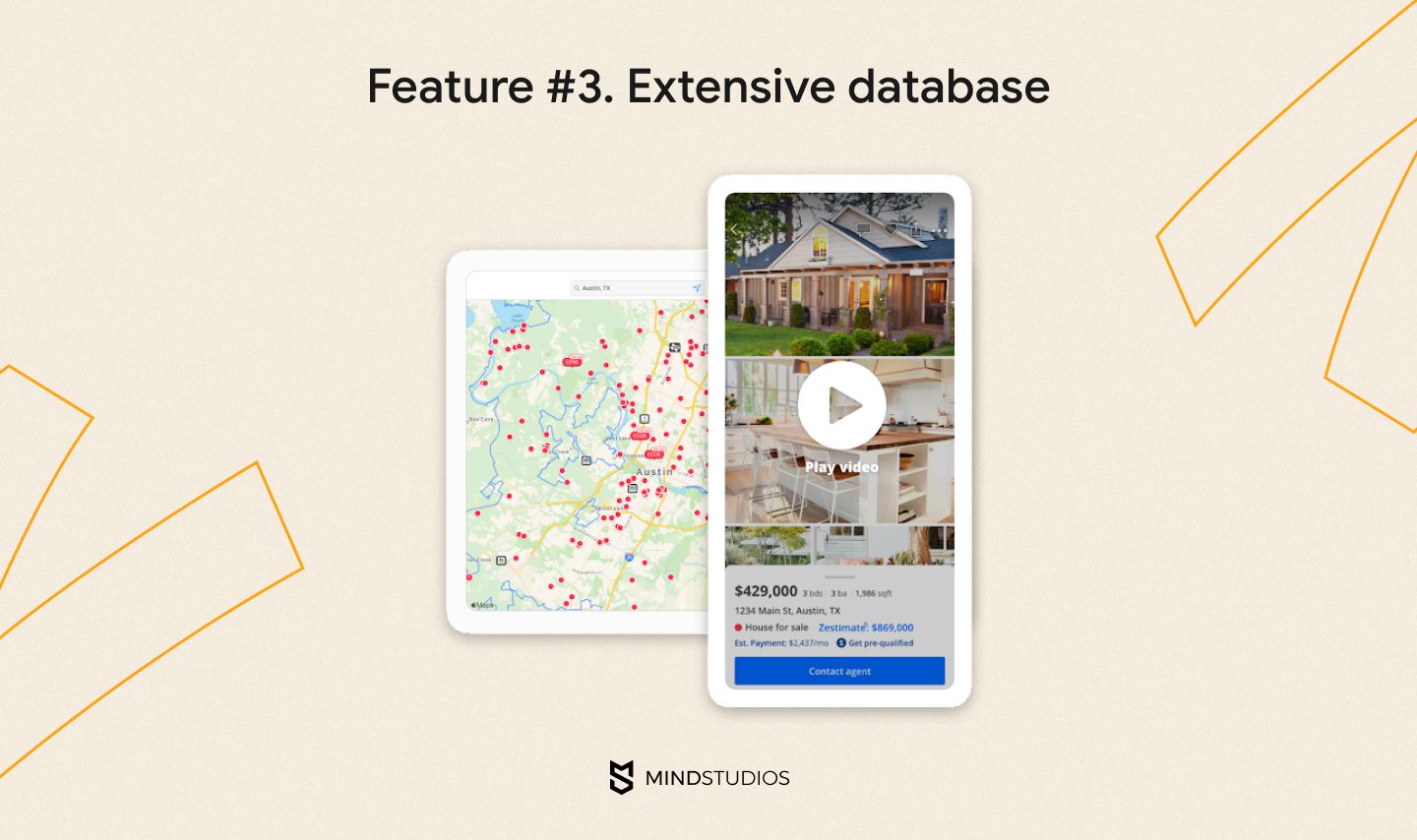
If you’re a real estate agent, people in your region can hire you to assist them with selling their properties. Thus, you form your own database of homes for sale in your region. But if you don’t have your own database or you want to expand the database you do have, you need to take data from third-party sources. Getting listing data from Zillow will suit you if you’re an American or Canadian realtor. If you aren’t, in addition to Zillow’s ways of getting property listings, we’ve highlighted several other sources that are applicable to any region.
How does Zillow get listing data?
Zillow’s online platform publishes 110 million US property listings acquired from different sources: multiple listing services (MLSs), listing syndication platforms, brokers, agents, landlords, and homeowners.
Multiple listing services
An MLS is a database created to regulate the process of sharing and selling homes between participants (licensed brokers and agents).
To include property listings in multiple listing service databases, brokers, agents, and technical partners need to complete five main steps:
Step 1. Be members of the National Association of Realtors (NAR) and conform to certain MLS rules.
Step 2. Get written consent from homeowners before adding homes to multiple listing services.
Step 3. Pay commission to list properties for sale to MLS databases.
Step 4. Follow the Internet Data Exchange (IDX) policy. IDX is a set of rules, standards, and technologies real estate players follow to track the way data moves from an MLS database to their website or mobile app.
Step 5. Integrate real estate APIs like the RESO Web API standard, SimplyRETS API, ATTOM Property API, or Mashvisor API to get adaptable data from MLS web portals.
Since the US real estate market counted almost 600 multiple listing services in 2020, making arrangements with MLSs can turn into a time-consuming and expensive process. Knowing this, the Zillow Group has come up with three alternative ways of getting up-to-date property listings.
Listing syndication platforms
You can collaborate with real estate companies in your country to integrate their property listing data directly into your real estate app. At their early stages, Zillow and Trulia entered into data sharing agreements with ListHub, one of the biggest real estate listing syndication platforms in the US. After their agreement ended in 2015, Zillow and Trulia began to collaborate with 40 more providers and hosted more property listings than ever before.
Brokers, agents, and landlords
You can allow landlords, agents, and brokers to place their property listings in your on-demand real estate app. To encourage them to do this, create convenient tools that will help them manage property listings and efficiently promote their services in one place.
Zillow allows agents to create free profiles, gather reviews from past clients, and promote their listings. Agents can also opt into the Premier Agent advertising model, where they pay for showing their contact information next to active listings in selected zip codes. For landlords, Zillow has created a real estate app called Zillow Rental manager where landlords can:
- List rental properties
- Verify tenants through online rental applications
- Create rental leases
- E-sign lease agreements
- Get rent payments straight to their bank accounts
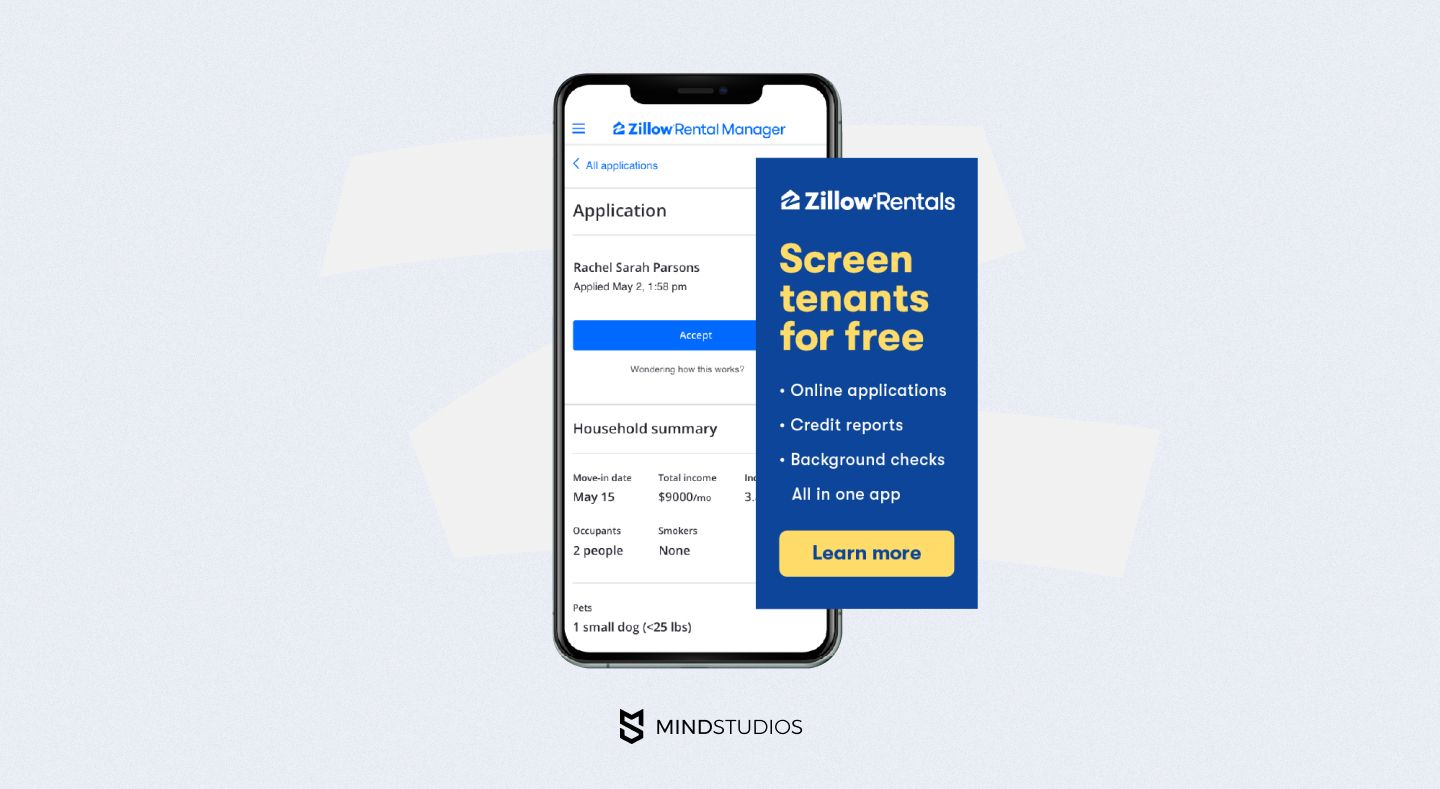
Property owners
According to Zillow’s research, one-third of sellers try to sell their real estate assets themselves. To satisfy this type of user, Zillow has For Sale By Owner (FSBO) listings. One more option for homeowners is Zillow’s Make Me Move listings, which allow homeowners to figure out interest from potential buyers and receive unexpected offers. If you encourage FSBO homeowners to post to your real estate mobile app, you’ll get your own fruitful source of property listings.
Can you use the Zillow API for your real estate mobile app?
As a realtor, you constantly need to analyze homes, assisting sellers with pricing homes and buyers with financing homes. To be aware of current real estate property values, it seems sensible to integrate APIs from Zillow into your real estate app. But according to the Zillow API terms of use, you can do so only for a website, not for a mobile app.
Feature #4. Filtered search
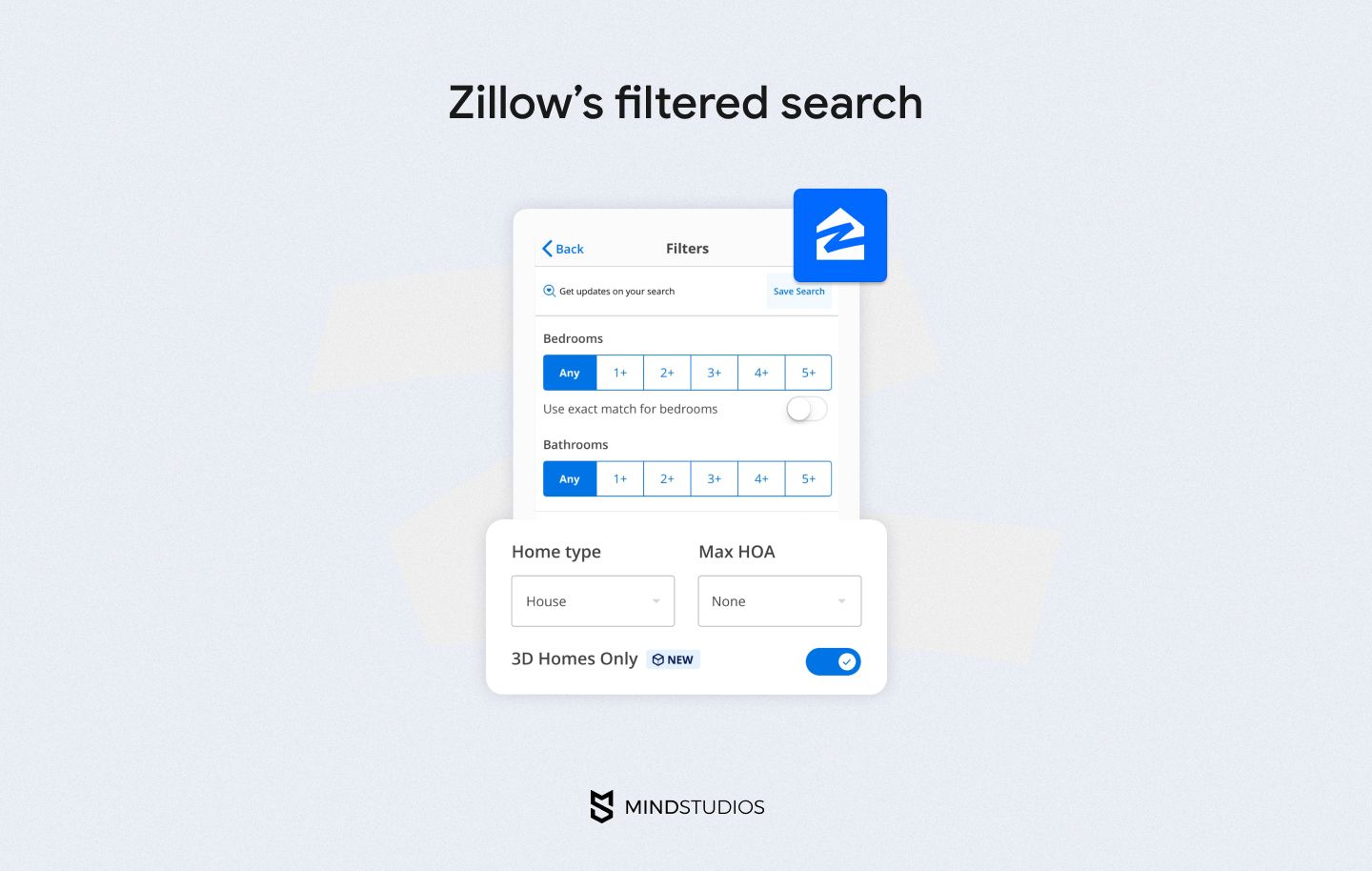
Narrowing listings by price and location is nice, but if your objective is to make a Zillow clone, you need to extend the list of filters. Also, think about enabling users to store selected search filters. This way, you’ll be able to notify users of new listings that fit their criteria.
Zillow offers users to search for a dream home using the following filters:
- Location
- Price range
- Number of bedrooms and bathrooms
- Home type (house, townhouse, multi-family, condo/co-op, lot/land, apartment, manufactured)
- Homeowner association (HOA) fees
- Square footage
- Lot size
- Year built
- Parking spot
- Basement availability
- Number of stories
- Tours (open house, 3D tours)
- Other amenities (A/C, pool, waterfront)
- View (city, mountain, park, water)
- Days on Zillow
- Zillow-owned (move-in ready homes evaluated and repaired by Zillow)
- Keywords
With a variety of search criteria and user types, it’s better to define what kind of filters your target users mostly need (maybe they wish to sort homes by agent). To do this, we recommend integrating analytics into your app prototype and analyzing feedback from beta testers and early adopters.
Feature #5. Mapping
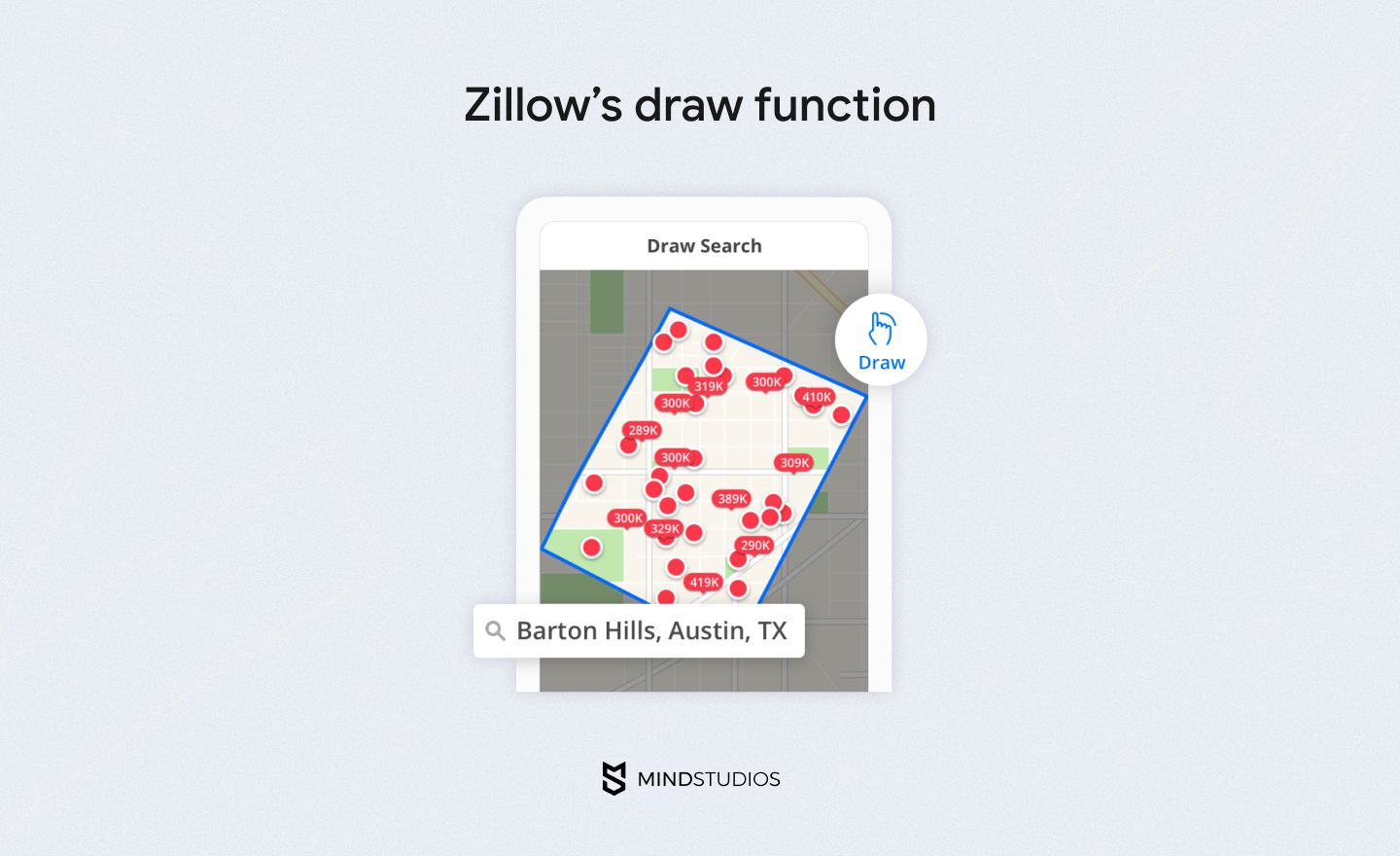
In the Zillow app, you can view property information by clicking on the map. Using the draw feature, you can circle an area on the map you’re interested in and get data about all properties within the boundary drawn. Zillow displays detailed neighborhood information including:
- Median Zestimate of nearby properties
- Foreclosure rate
- Home value predictions over the next 12 months
- Availability of nearby public and private schools along with their proximity to the property
34 neighborhood map overlays in the Trulia app give users more insights into living in a neighborhood, such as:
- Monthly property costs including property taxes, mortgage payments, home insurance, and other associated fees
- Crime rates
- Nearby schools with ratings, shops, and eateries with ratings
- Probability of natural disasters
- Local population demographics (median age, family status, education, and more)
- Traffic intensity
- Neighbors’ impressions
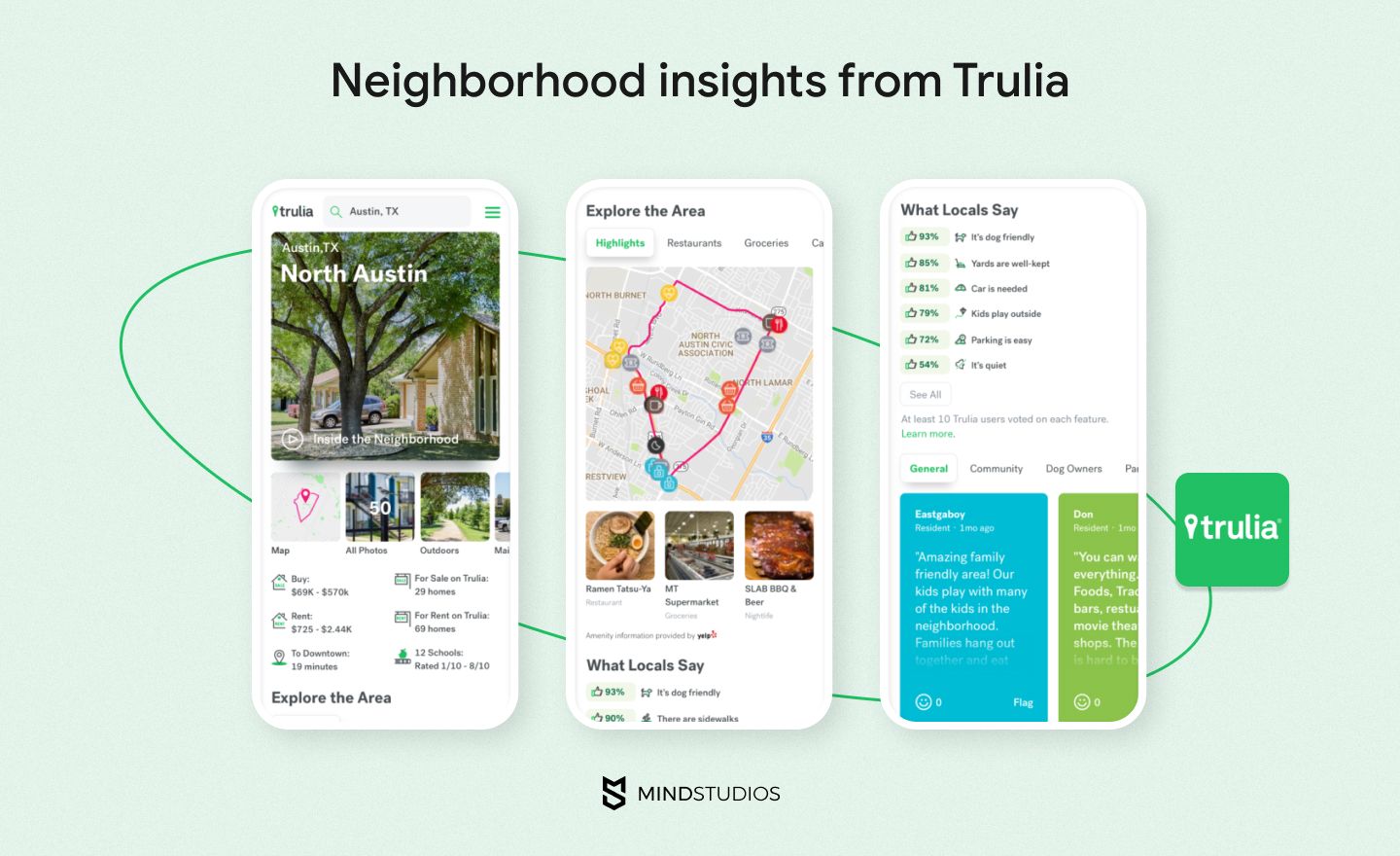
One more thing that distinguishes Trulia from Zillow is its heatmap utility. Trulia uses this to display many data points on the map using colors, not markers.
More and more countries and cities are creating their own open databases. Finding the right source of information for your app may be less challenging than you think.
Feature #6. Property details
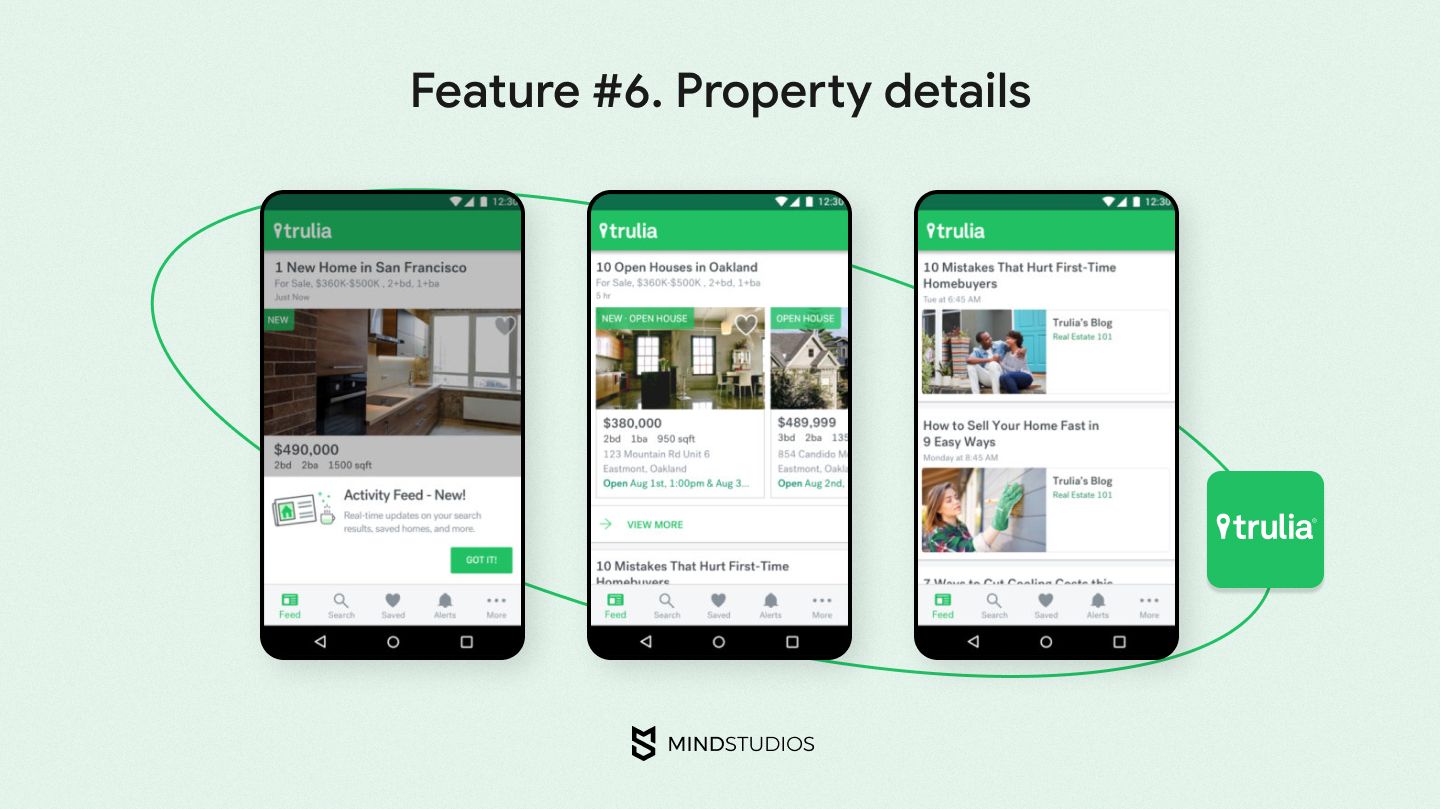
Property details are the most important part of your real estate mobile app. They give users what they seek:
- Property photos
- Videos
- Price
- Location
- Property type
- Number of bedrooms and stories
- Size
- Year built
- Monthly mortgage breakdown
- Description of owner or agent
- Additional amenities (furniture, appliances, flooring, HVAC, basement/garage, parking, and so on)
- Broker’s or agent’s contact information
Pictures, graphs, and charts always beat descriptions. Both Zillow and Trulia use graphs and charts to display property details like mortgage rates. You can use different SDKs to implement graphical elements in your real estate mobile application.
Feature #7. Save to favorites feature
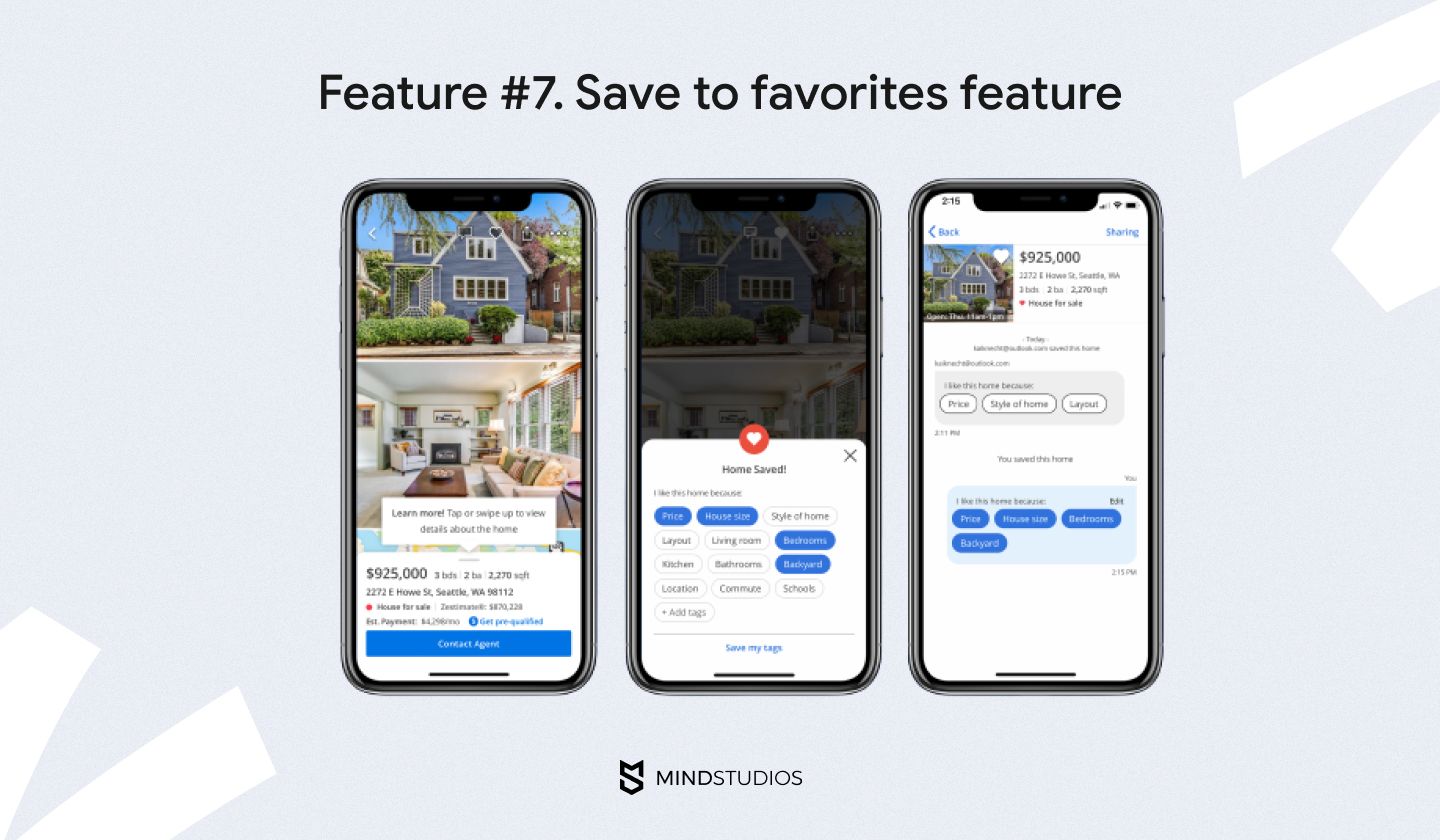
To better understand what your users are searching for, you can offer them to save properties they like. Buying or renting a home doesn’t mean making a quick decision, which is why users will be thankful for the possibility to return to properties they like and view them again.
Feature #8. Push notifications
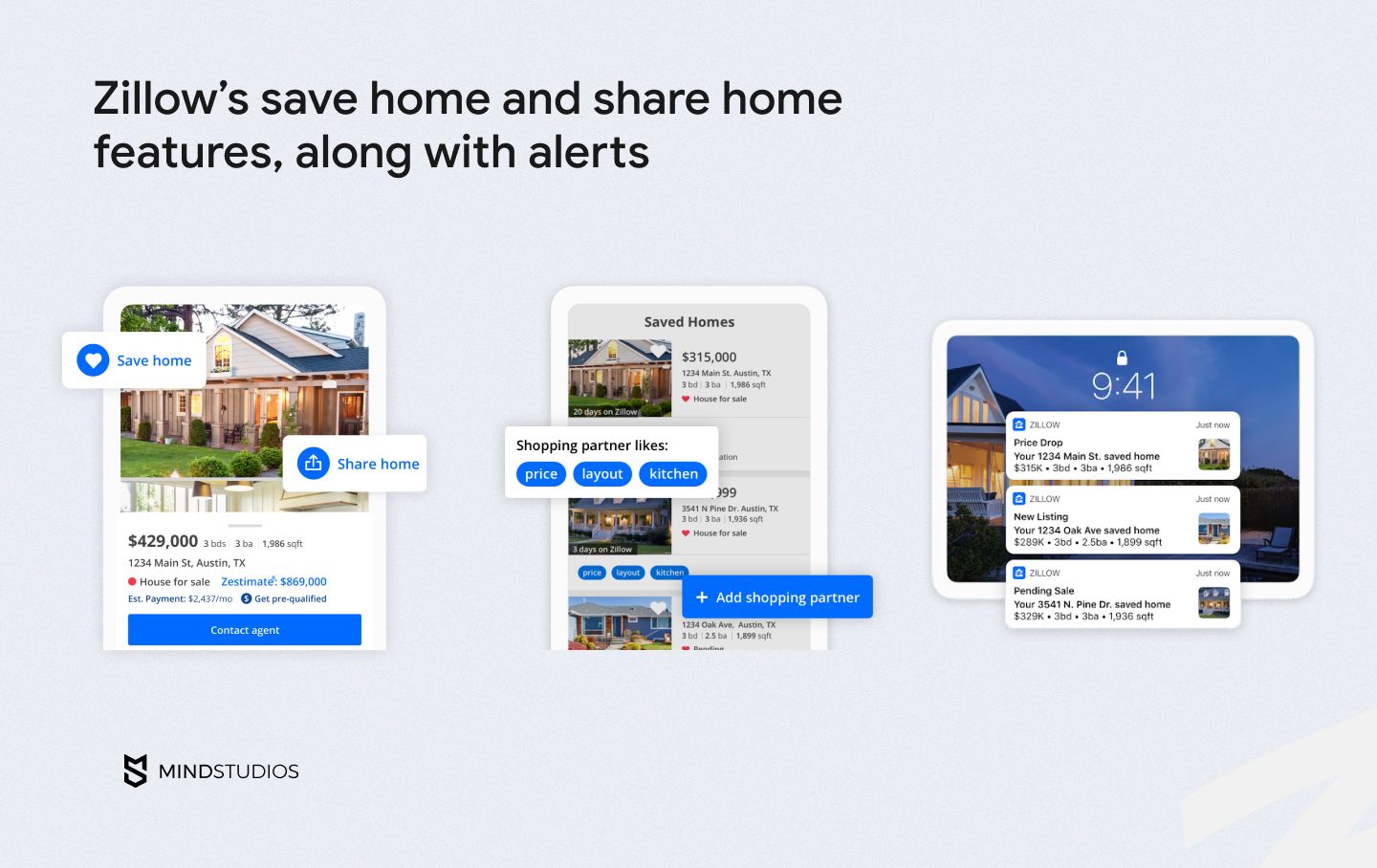
How can you make user interactions with your real estate mobile app more efficient? By sending targeted push notifications. To make them targeted, you need to know your users’ preferences. You can extract them from:
- User profiles
- Save to favorites feature
- Recommendation engine
By using a recommendation engine backed by machine learning and artificial intelligence (AI) technology, you can give personalized recommendations where you show users properties that are similar to their favorites or closest to their requirements.
After defining your users’ preferences, you can send relevant push notifications that will bring users back to your app. For example, you can send push notifications when:
- A new property is listed in a region where they’ve searched
- The price of a property they’ve saved or looked at is lowered
- A saved property listing is updated or changed
Feature #9. Calendar
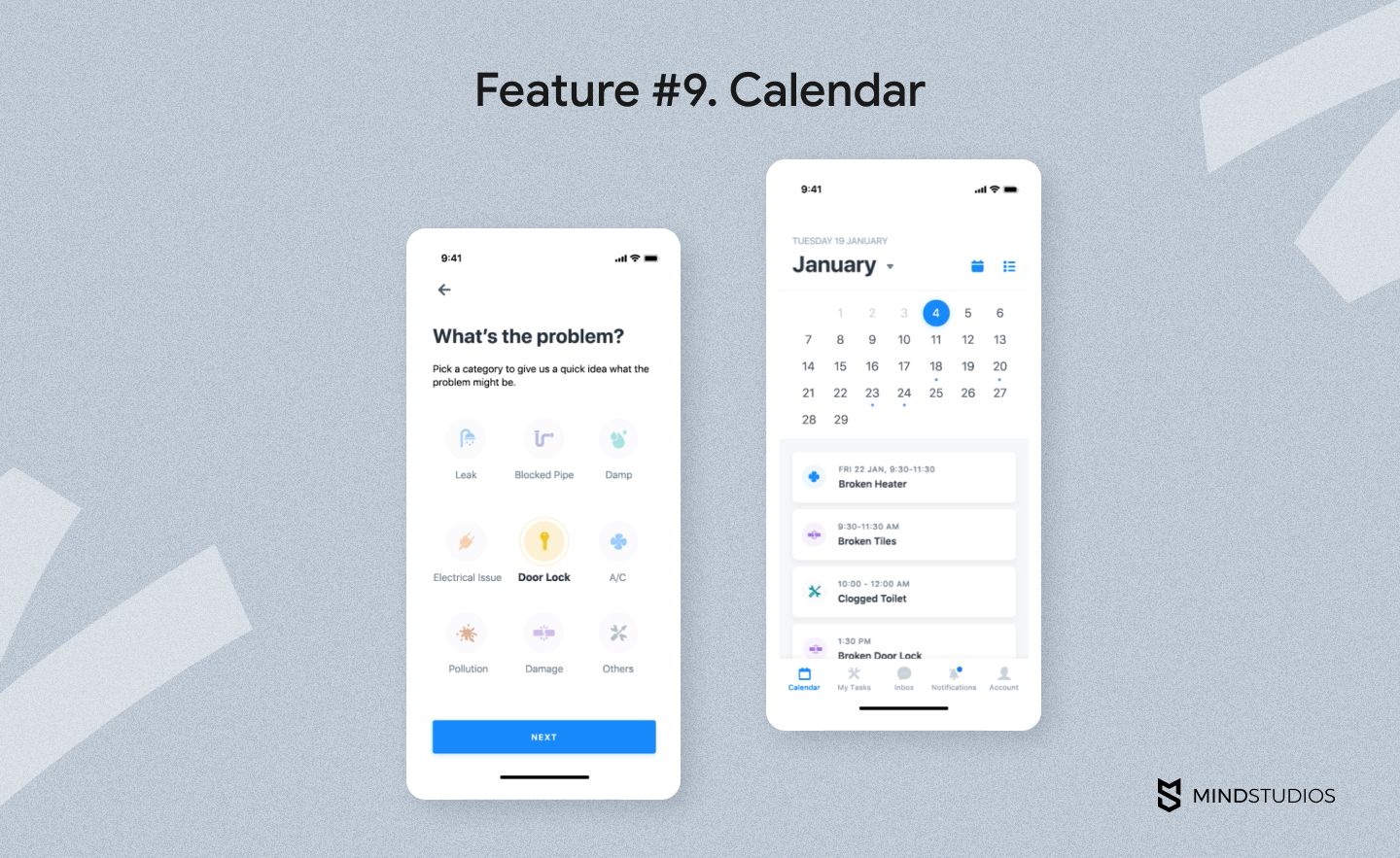
This feature is crucial for all your app users. Using an in-app calendar, buyers will be able to directly check available dates and schedule showings with agents or homeowners. The same important thing is a calendar for agents. They can effectively manage their showings in the app and get reminders at the appointed time.
Feature #10. Ratings & Reviews
Ratings and reviews from real people about the realtors' professionalism, the homes' condition, or neighbors' friendliness can be decisive for homebuyers in purchasing properties. Ratings and reviews also can help your agents enhance their authority as true experts. Positive ratings and reviews about properties can streamline the selling process for homeowners. So allow all your app users to leave reviews and set ratings.
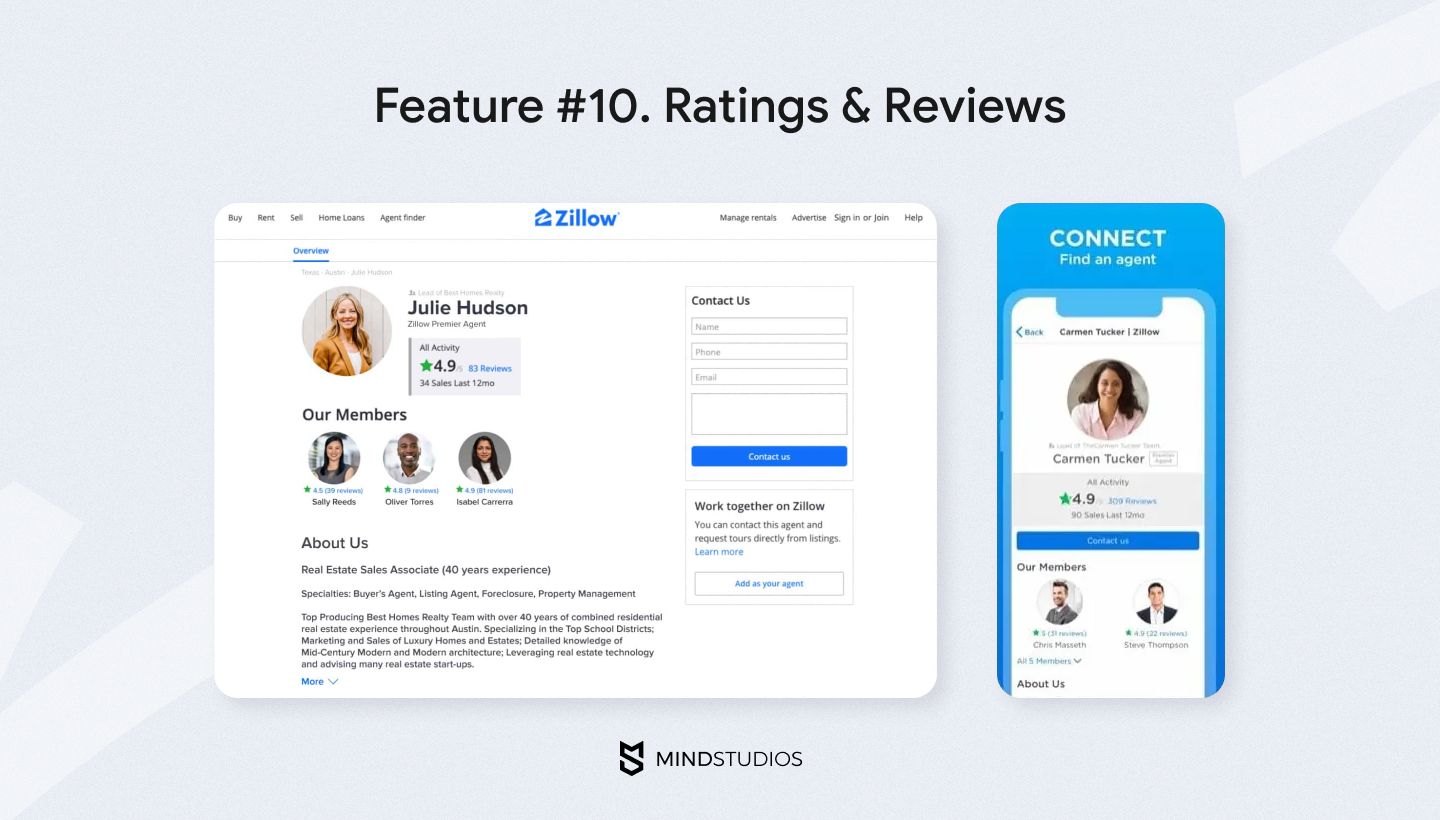
Feature #11. In-app analytics
This feature can be implemented in two ways:
- For your agents. Allow them to monitor their key performance indicators and look through reports displayed in visual-friendly in-app dashboards, graphics, and diagrams.
- For you as the mobile app owner. Thanks to the integrated admin panel, you’ll be able to keep your finger on the pulse of your real estate mobile app performance. You’ll know how much time an average app user stays on a specific app screen, what screens users quickly leave, and more.
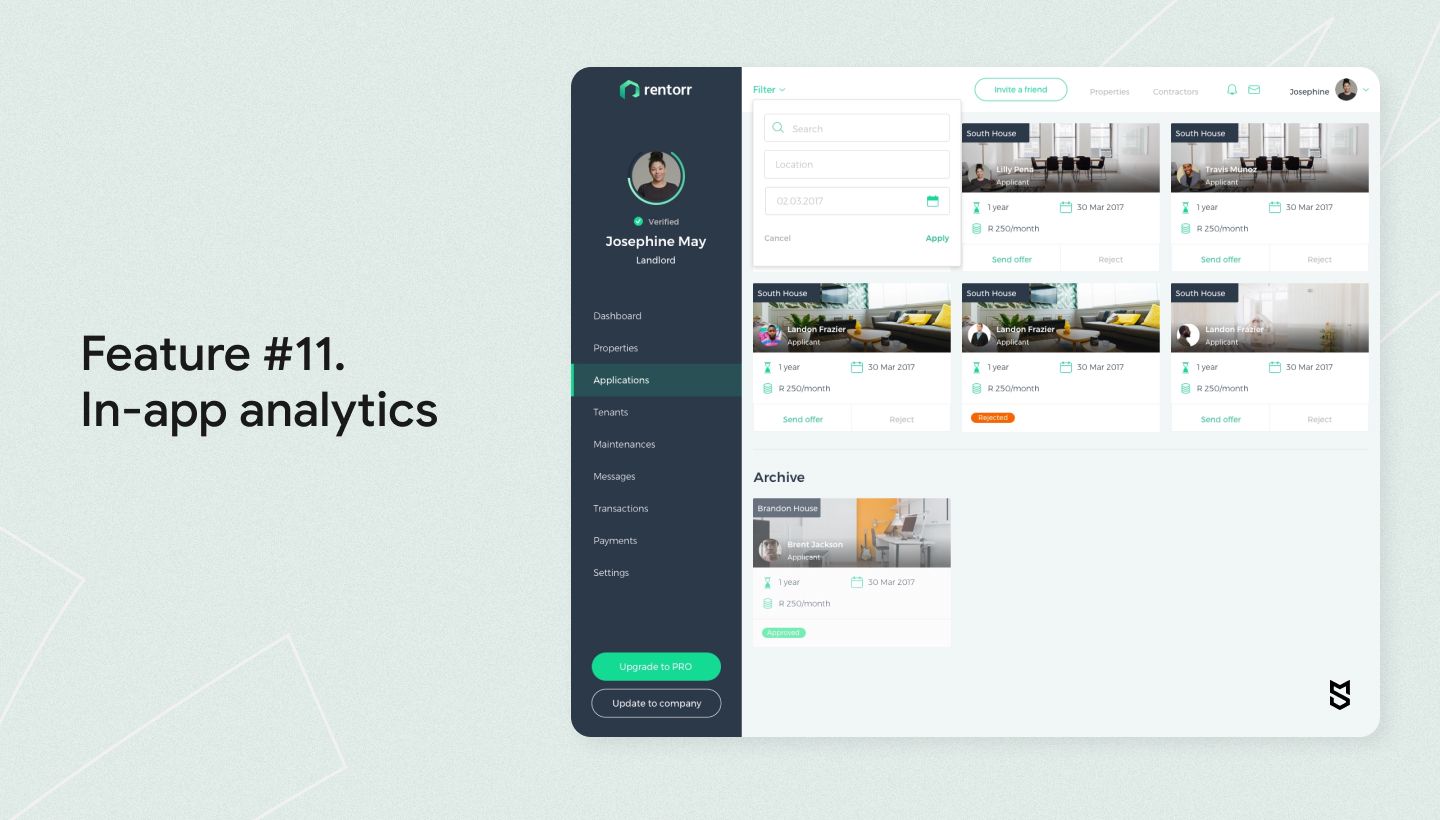
All these features form the backbone of your mobile app MVP. After developing it, follows no less fascinating stage of iterative tests. The results will tell you whether you should change your MVP a bit, add extra features, or go back to the drawing board.
Real estate mobile app features to stay competitive
To help you join the ranks of real estate mobile app leaders, we’ve prepared the five avant features for your post-MVP app versions, with one of the features that could give you a head start even over Zillow.
Virtual home tours
If you want to make a Zillow clone app, you need to focus on maximum visualization for your property listings — that is, implementing 3D panoramic photos and 3D home tours.
Check out our design concept for 360-degree search in a real estate mobile app.
A 3D panorama allows your users to examine the exterior of a property before visiting it. Based on panoramas captured by a smartphone or 360-degree camera, Zillow’s app creates 3D home tours.
When you make your own real estate app, keep in mind that agents will simultaneously upload lots of property images. Let’s say up to 100 images each up to 20 MB in size. You should ensure that your app will work flawlessly while uploading photos and videos.
In-app calculators
Enable users to get current estimates of property cost and mortgage rates. For this, you can integrate calculators powered by machine learning and big data algorithms into your app.
Having a nationwide median error rate of 1,9% for on-market homes, Zestimate is a good example of an accurate property calculator.
For adding an in-app mortgage calculator, you can take an example from Redfin’s one. It displays user mortgage payments including the principal and interest, homeowner’s insurance, taxes, homeowner’s association (HOA) fee, and private mortgage insurance (PMI).
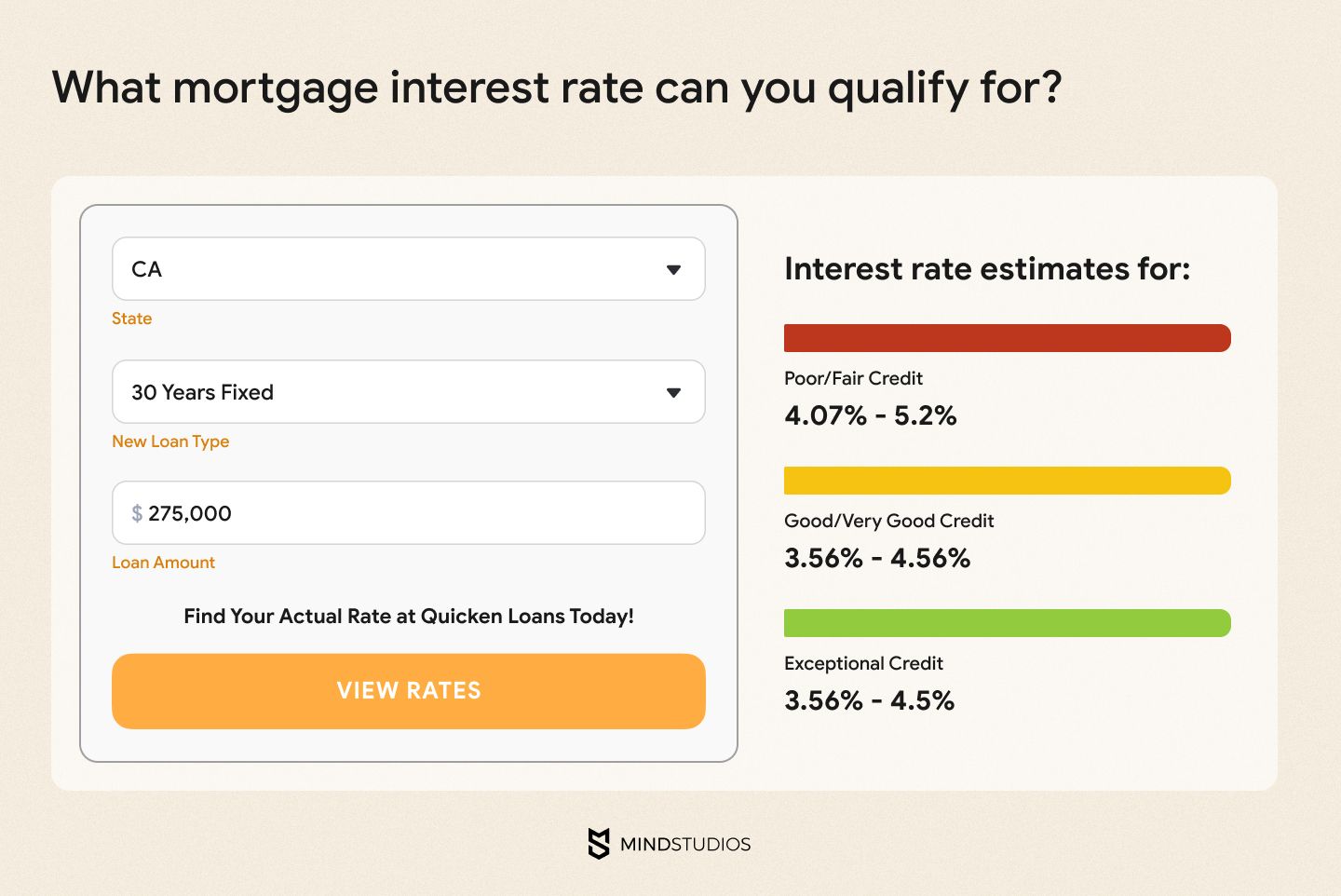
Real-time messaging
One of the core missions of your real estate app is to provide the most convenient functionality for connecting homeowners, homebuyers, and your agents. Based on users' preferences, you can implement one of the following tools or all of them to streamline communication:
- Callback request
- In-app chat
- Book a consultation
- Send an email
- Voice and/or video calls
Augmented reality
If you want to capture the American market, you need to think differently and create something that isn’t just like Zillow. For example, using augmented reality (AR) technology in your real estate app, you can enable users to virtually furnish homes in consultation with professional designers. In other words, you can enrich your Zillow-like real estate app with AR-backed functionality from the IKEA app.
E-signing
Your real estate app needs to be secure. We’ve already discussed sign-up options via social media accounts, emails, and phone numbers but want to highlight the importance of providing two-factor authentication. Moreover, you can require users to scan their ID to mitigate the risks of scams. But with blockchain technology, you can double-increase your app protection and enable users to safely e-sign contracts and make e-payments.
Real estate mobile app tech stack
Let us share the technology stack that our developers will use if they build a real estate listings app for your agency.
For sign-in/sign-up
To enable users to sign in and share via social media, you can use the Facebook SDK, LinkedIn SDK, and Google Sign-In.
For listings and databases
First of all, follow the Internet Data Exchange (IDX) policy. IDX is a set of rules, standards, and technologies real estate players follow to track the way data moves from an MLS database to their website or mobile app.
Then, integrate real estate APIs like the RESO Web API standard, SimplyRETS API, ATTOM Property API, or Mashvisor API to get adaptable data from MLS web portals.
For advanced filtered search
To provide your users with a wide range of filtering options, you’re likely to need:
- CoreLocation to track a user’s geolocation
- CoreData or Realm to retrieve a list of saved properties
- Elasticsearch for customizable, smooth, and quick search based on any number of criteria
For mapping
How to use Zillow app’s experience to provide your users with exhaustive information about the areas they explore? You should use third-party APIs:
- GeoNames is a free database containing over 11 million place names
- MapBox SDK or Google Maps API for designing custom maps and layers
- Google Places API to add information about neighborhoods from Google Maps
- Google Maps SDK for Android heatmap utility and iOS developer library for displaying map overlays to implement heat maps
- Attom Data Solutions, Spatial Neighborhood, and Data.gov APIs to access local population demographics, crime statistics, and other open-source information
For 3D virtual tours
To create 3D home tours like Zillow within your app, you can use a tool like EyeSpy360.
For backend
You should ensure that your app will work flawlessly while uploading photos and videos. Tools like AWS Lambda will help you host backend logic for your real estate app development project.
Also, you need somewhere to store data on properties, users, and updates. For this, you can integrate mobile app databases like MySQL, PostgreSQL, or Redis.
For push notifications
To send push notifications to devices, you can use the Apple Push Notification service (APNs) and Firebase SDK.
Cost to build a real estate app like Zillow
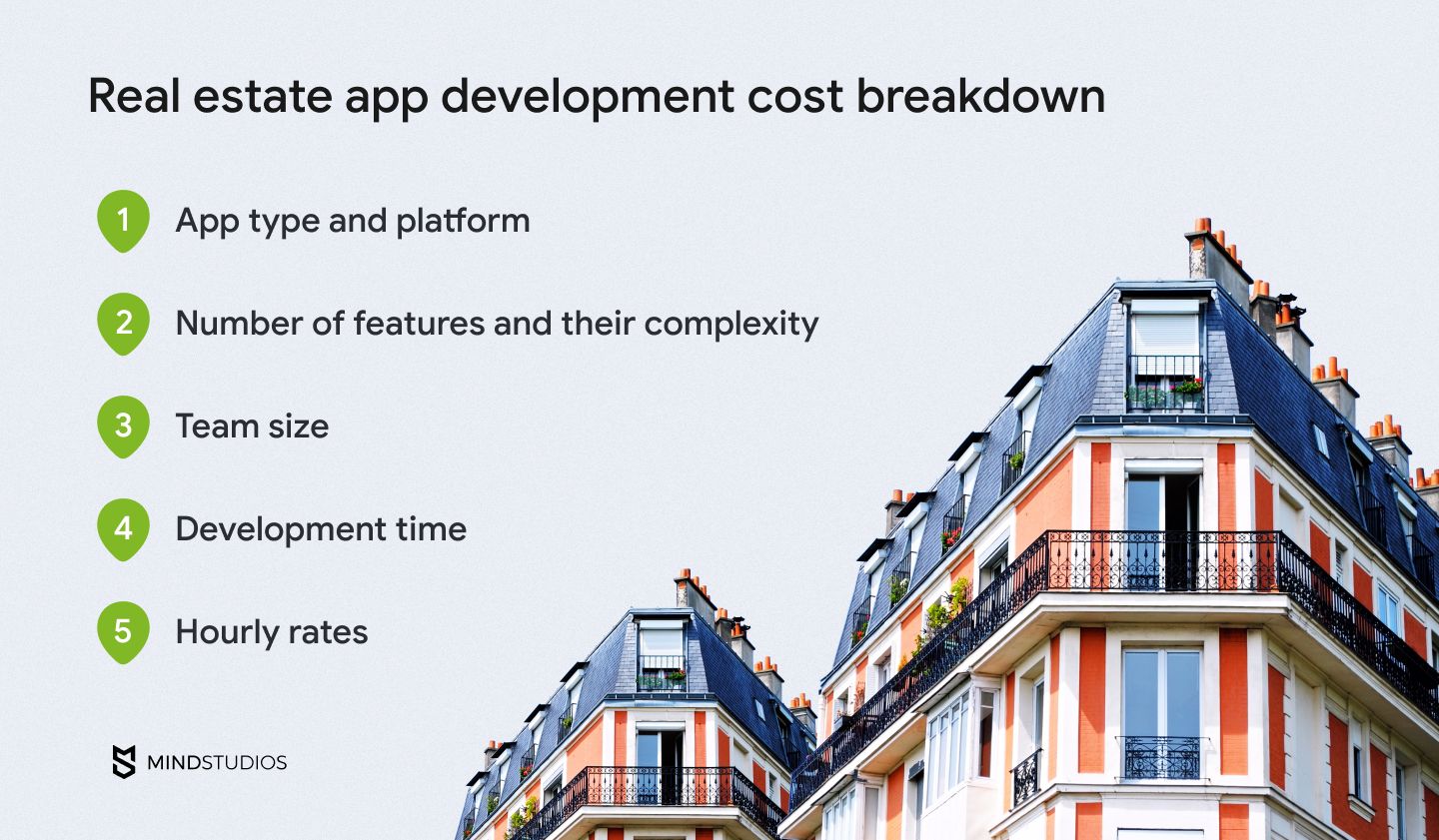
Once you’ve decided to create an app like Zillow, you should think about whom you can entrust with application development. Since you need to get the product you want on time and on budget, it’s best to outsource your mobile app development for real estate to a third-party software development agency.
To make an app like Zillow, you need a team of the following specialists:
- 1 project manager
- 1 UI/UX designer
- 1 iOS developer (or 1 Android developer based on project requirements)
- 1 backend developer
- 1 quality assurance engineer
To provide you with an actual estimate, let’s outline what features your real estate mobile app MVP will include. Here’s an approximate list:
- Onboarding (from 3 to 5 tutorial screens)
- User authorization (sign-up, log-in, forgot/reset password)
- User profiles (buyer, owner, agent, admin)
- Payment methods (in-app purchase by Stripe or PayPal)
- Create and publish properties (description, photos, facilities, cost, etc.)
- Search properties by location and keywords
- Filter properties
- Sort properties
- Save properties to favorites
- Maps integration
- Contact an agent (via phone call or messenger)
- Push notifications
- Share property details page
- Admin panel
Let’s estimate the time necessary to create a mobile app for your real estate business – like Zillow or Trulia – with the abovementioned set of features:
| Business analysis and project specification | 96+ hours |
| UI/UX design | 160+ hours |
| iOS development | 400+ hours |
| Backend development | 450+ hours |
| Testing | 220+ hours |
| Admin panel | 96+ hours |
| Project Management | 160+ hours |
| Total | 1582+ hours |
According to this approximate time estimate, the cost of real estate mobile app development for iOS will start at $63,280 and will rise with extra app features or Android app development.
Challenges of real estate application development
When you want to make your own real estate app, you should keep in mind that there will likely be barriers that can roadblock you. We’ve prepared a rundown of possible challenges to arm you with efficient solutions.
Too competitive market
Through all this article, we’ve highlighted that the real estate market teems with the competition. With a mobile app as a tool to surpass your competitors, you won't rather become unique. What can help you beat the competition is focusing on your target user needs and how to meet them in the best way possible. With the help of an experienced team who commits the learn-build-iterate approach to the mobile app development process, you'll be able to polish your real estate app up to a world-known brand.
High secure requirements
When you build a real estate listing app, it implies storing a variety of sensitive information including user profiles with financial information from banking accounts as well as information about current transactions of your real estate agents. You need to ensure that your mobile app development team can cope with high-security requirements. Since we’re currently working on a secure messaging app like Signal, we know how to prevent any unauthorized access to your users’ profiles.
Costly development
The more complex features your real estate mobile app development project will include, the more expensive will be the cost to build it. But the current target audience’s preferences put you in a stalemate: to best serve them, you need to implement 3D virtual tours, property and mortgage calculators, keyless entry systems, etc. In this case, you can appeal to the soft launch model instead of the hard launch. This is one of the ways to reduce real estate app development costs but not the only one.
Contact our business development consultant to figure out other efficient ways to cut real estate mobile app development costs, yet getting a high-quality end product.
Lack of hard skills required
Compiling the system requirements to your real estate mobile app development project, you’ll be able to define the specialists and their requisite skills needed to perfectly implement the app functionality. But what should you do if you recognize your team couldn’t provide you with the required hard skills? In this case, consider choosing third-party real estate app developers to
outsource.
About Using Real Estate App Builders
To reduce costs and sidestep technical challenges, real estate app builders may seem like an attractive option. However, there are several limitations of app builders that can hinder the development of a robust and truly unique real estate app:
- Limited customization: Real estate app builders often come with pre-designed templates, cookie-cutter features, and limited customization options. As a result, it can be challenging to create a distinctive app tailored to your specific business needs and brand identity that could stand out in the competitive real estate market.
- Lack of scalability: As your real estate app grows and gains more users, you might encounter scalability issues with app builders. These platforms might not be equipped to handle a high volume of traffic and transactions, leading to performance problems and dissatisfied users.
- Security issues: While real estate app builders may claim to be secure, relying on a third-party platform might expose your sensitive data to potential vulnerabilities. In the real estate industry, where user information and financial transactions are involved, data security is of utmost importance.
- Dependence on external providers: Using real estate app builders means depending on their ongoing support and maintenance. If the platform undergoes significant changes or gets discontinued, your app could face compatibility issues or even stop functioning altogether.
- Lack of innovation: App builders typically follow trends rather than being at the forefront of technological advancements.
A reliable outsourcing software development team can provide a custom real estate mobile app development, employ the latest technologies, and ensure that your real estate app remains secure and useful for users.
The Mind Studios experience
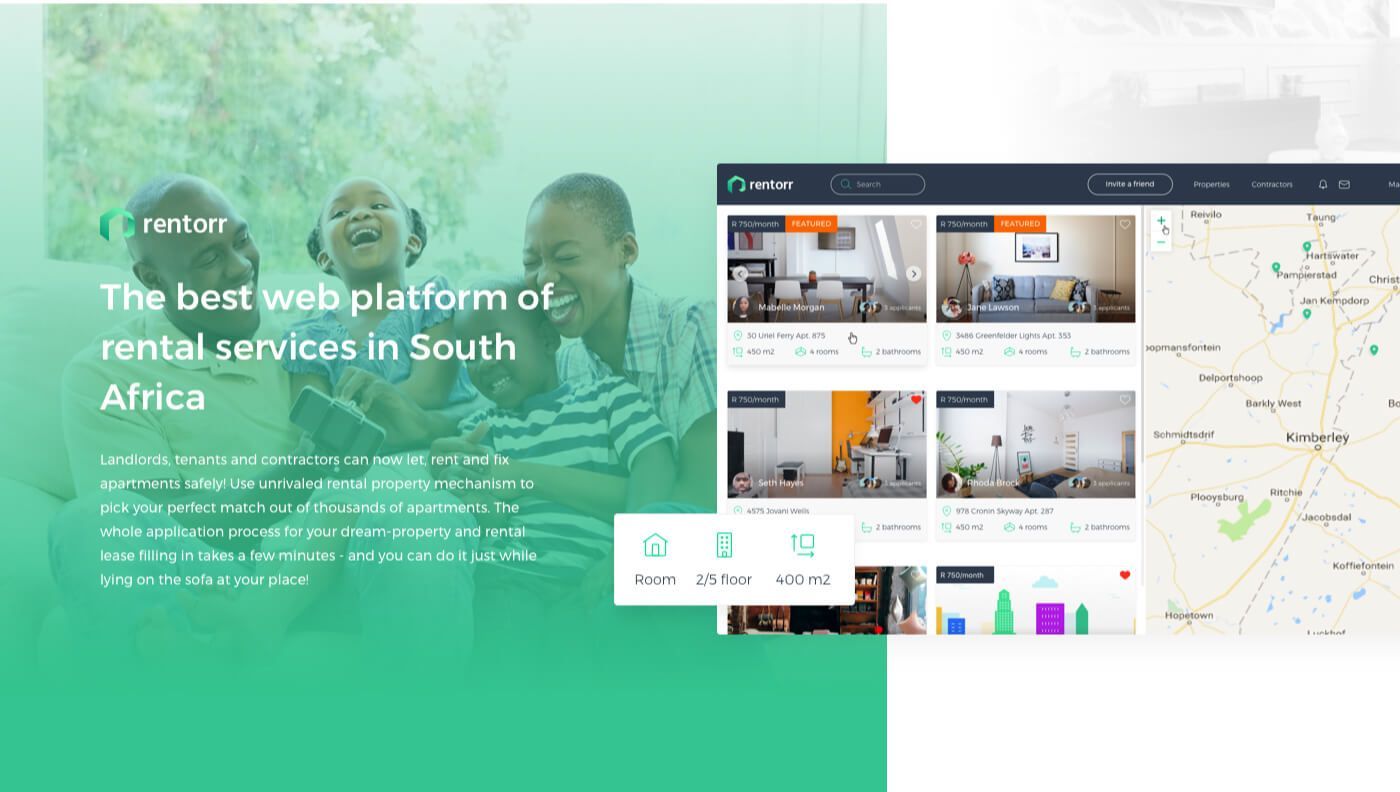
So how to create a real estate app successfully?
At Mind Studios, we wholeheartedly believe that behind the scenes of every successful real estate mobile application development project lies tons of data-driven decisions based on preliminary conducted in-depth analysis of market trends, customers’ expectations, and competitors’ strengths.
For us, it’s crucial to match our client’s business goals with the ability of their niche to cover these goals. To do this, first and foremost, we recommend providing unit economics calculations and making preliminary forecasts to client’s ROI.
The same rigorously we relate to a mobile app UX/UI design. By conducting beta-testings for analyzing the convenience of app screen interactions, we always try to find the most intuitive options for users. Look at some of our real estate mobile app designs on Dribbble or Behance.
Conclusion
Real estate mobile apps are highly convenient, and the demand for them will only increase. So will the competition. Despite Zillow’s and Trulia’s presence, people are still looking for alternatives. So how can you make a real estate app that will take its rightful place in this niche?
Find a trustworthy real estate mobile application development company.
Also, keep in mind that your real estate mobile app design needs to be user-friendly. Apps like Zillow and Trulia are popular not only for their large property databases but for their simple and easy-to-use interfaces. Balancing these app development requirements is no easy matter. But with the right development team, anything is possible. Want to see? Drop us a line.

